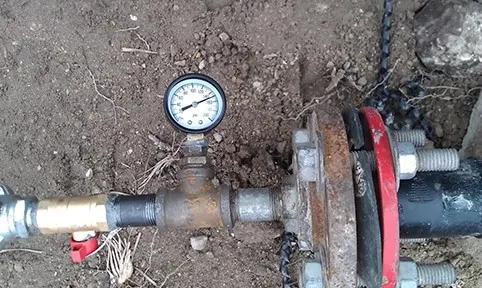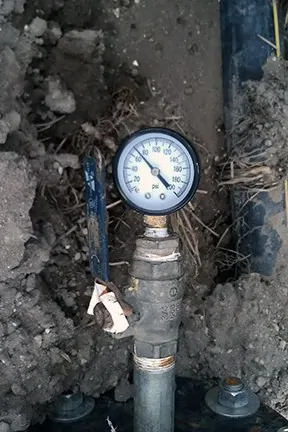

Pressure testing of HDPE pipes takes place at almost every landfill lining system and landfill gas collection system construction project. The pipes must be tested to make sure the fusion welds are intact and are not leaking. When engineers specify pressure testing, they identify the required test pressure, the duration of the test, and the allowable pressure drop at the completion of the test. The test pressure may vary from one pipe application to another. For example, the specified test pressure may be as high as 1.5 to 2 times the maximum service pressure in the pipe for leachate forcemain pipes; whereas for pipes used in landfill gas collection systems, where the pipes are under vacuum, the specified test pressure may be less. Test duration may vary from one hour to a few hours, and the allowable pressure drop may vary from zero to a percentage of the initial pressure.

What is often missing from pressure test specifications is the effect of the ambient temperature variation on the pressure changes within the pipe during the test. If incompressible fluid (e.g., water) is used for pressure testing, pressure changes due to ambient temperature variations are less significant than when compressible fluid (e.g., air) is used.
For incompressible fluids, SCS has developed a mathematical model that enables the engineer or contractor to calculate pressure changes due to ambient temperature variations during the test. The calculated pressure change should be considered when evaluating whether the test results are passing or failing. Increasing ambient temperatures during the test may cause expansion in the pipe, and the expansion causes an additional pressure drop that is not caused by any leak in the welds. On the other hand, decreasing ambient temperatures may cause contraction in the pipe, which increases pressure in the pipe. In this case, a pressure drop due a leak in the weld may not be detected because of a higher pressure created inside the pipe due to pipe contraction. It is recommended that engineers or contractors use the mathematical model to calculate a modified allowable pressure drop by considering the calculated pressure change (positive for pipe expansion or negative for pipe contraction) before the pass/fail assessment is carried out.

Recently during the test period in the field, a pressure drop was experienced that slightly exceeded the specified allowable pressure drop. Field staff reported ambient temperature variation during the two-hour test. When the modified allowable pressure drop was calculated using SCS’s model to account for the ambient temperature variation, the test ended up passing. Note that field documentation is extremely important for assessing the pass/fail results. This becomes even more important when the specified test duration is several hours long and the ambient temperature variation is significant.
Questions? Contact Ali Khatami, PhD, PE, LEP, CGC, is a Project Director and a Vice President of SCS Engineers. He is also our National Expert for Landfill Design and Construction Quality Assurance. He has nearly 40 years of research and professional experience in mechanical, structural, and civil engineering. Dr. Khatami has acquired extensive experience and knowledge in the areas of geology, hydrogeology, hydrology, hydraulics, construction methods, material science, construction quality assurance (CQA), and stability of earth systems. Dr. Khatami has applied this experience in the siting of numerous landfills and the remediation of hazardous waste contaminated sites.
Read more here. Pass/Fail Criterion for HDPE Pipe Pressure Testing Using Incompressible Fluid, in Talking Trash, March 2015